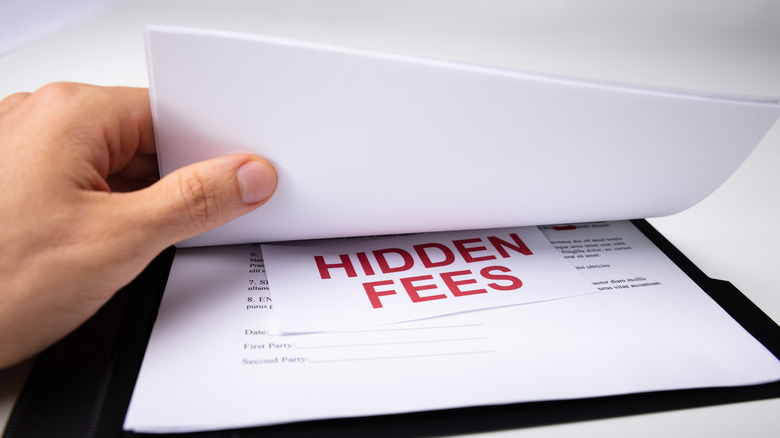You've Been Warned: Hidden Fees Tax Services Don't Want You To Know About.
The sad reality is that tax preparation services don't always tell you the full cost upfront. While many debate whether an online tax service is cheaper than a tax professional, both options have the ability to cost you too much depending on their hidden fees. Online platforms in particular can come with hidden fees that make filing much more expensive than expected. This is especially true depending on how complex your return is and what services you need. You might get hit with fees for state filings, audit support, or even for paying your tax preparation costs directly out of your refund — which alone can tack on an extra $40 to your total bill. Without realizing it, what at first might have seemed like an affordable (or even free) service can quickly add up into something else entirely.
This can be especially true if you have complicated filing needs like freelance income, investments, or rental properties — although we recommend upgrading to premium services for these more complicated tax scenarios. Some companies even use tier-based pricing, meaning your final cost depends on your job, deductions, and tax credits. With that said, there are ways to know what and how much a tax prep services might charge you. For starters, learning about hidden fees, such as document processing fees, electronic filing fees, and additional charges for accessing previous years' tax returns can help you learn how best to avoid them.
Specific hidden fees
Another common charge is known as a document processing fee and it can be particularly important for business owners and freelancers that might require paying for a tax professional. Tax preparers generally charge extra to sort through receipts, organize messy forms, and input scattered financial records — meaning it pays to stay organized. In fact, a 2021 survey from the National Society of Accountants found that over 70% of professionals charged sole proprietors and partnership business owners an additional $145.14 and $278.67 respectively for bringing in "disorganized or incomplete files".
Also, some preparers charge separate fees for electronic submissions — which can be $25 or more – for your federal AND state filings. However, these aren't always disclosed upfront. Another hidden charge can appear when you want to access past tax returns. Even if you filed with the same service before, you might have to pay upwards of $30 – not to mention the IRS will charge you $50 for a previous return.
Then, there are the fees associated with refund advance loans and refund anticipation checks (RAC). These loans allow filers to access their anticipated refund checks sooner — with the repayment deducted from their refund once it's issued. However, before you see a dime, the loan provider take their fees directly from your refund — then whatever's left gets sent to you. The Treasury Inspector General for Tax Administration found that for the 2024 tax season, RAC fees ranged from $25 to $55.
How to avoid hidden fees
Fortunately, there are several steps you can take to avoid hidden fees and ensure your tax preparation process is transparent. Before engaging a tax preparer, ask for a breakdown of all fees and charges, such as e-filing fees or document processing fees. Or consider preparers that charge a flat fee. Regardless, ensure you thoroughly review any service agreement before signing.
You can also choose to file your taxes yourself. The IRS offers free tax filing services through its Free File Program for eligible taxpayers (those with an Adjusted gross income of $84,000 or less). There are also free tax assistance programs for those aged 50 and above through AARP. Make sure you check ratings and/or reviews from the service or individual professional you're hoping to use so can make sure the provider isn't prone to sneaky fees. This is especially important for any providers offering low or free initial prices.


